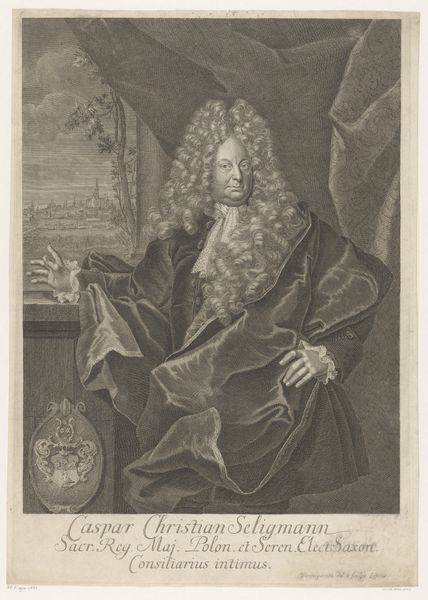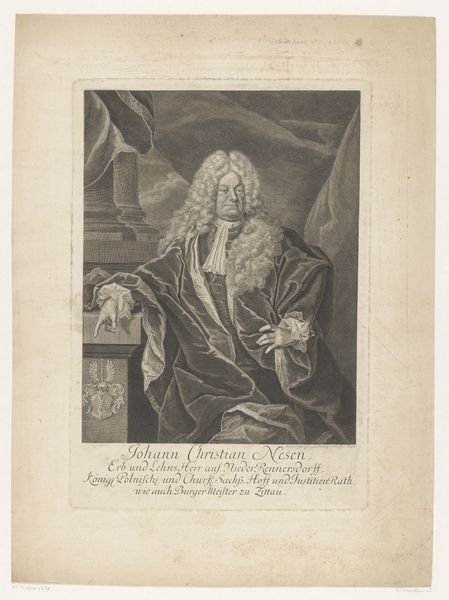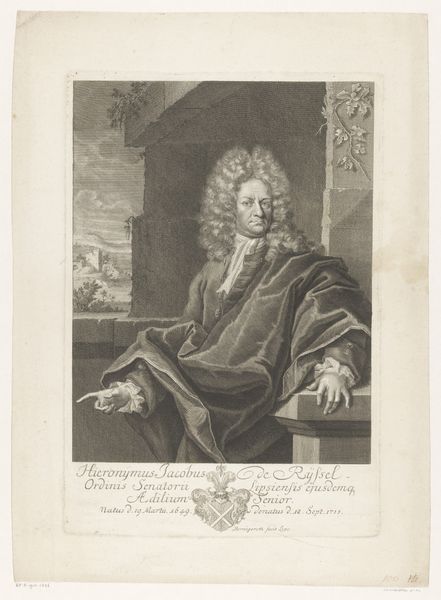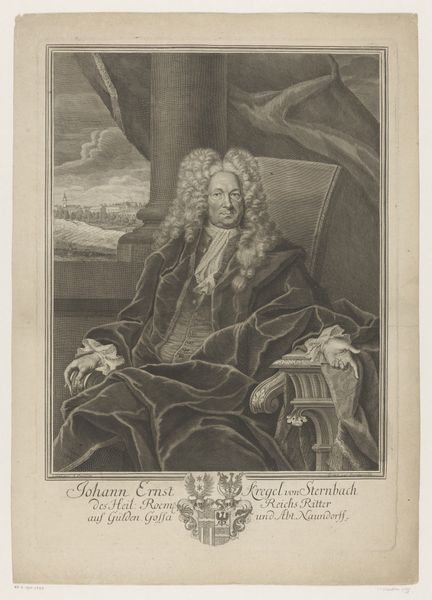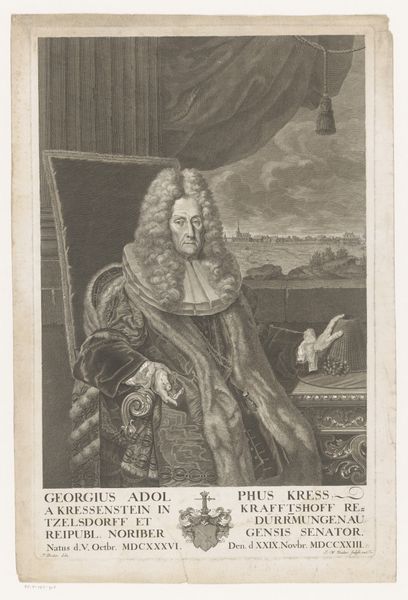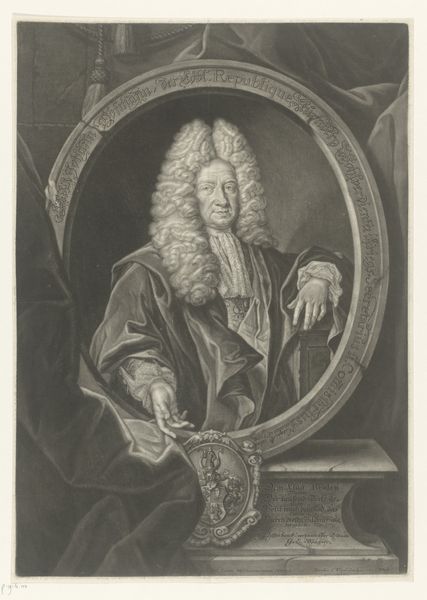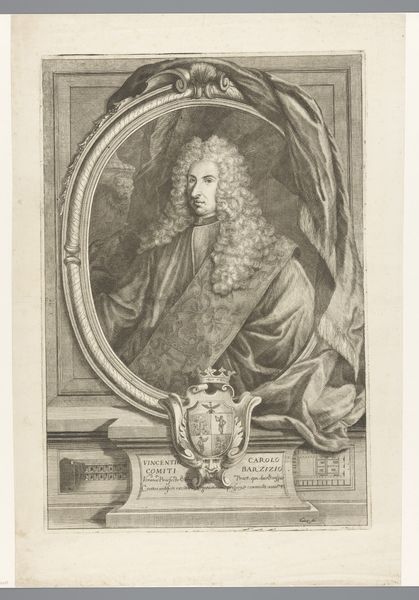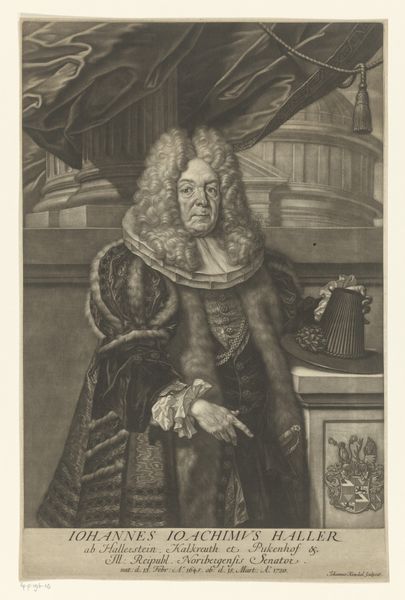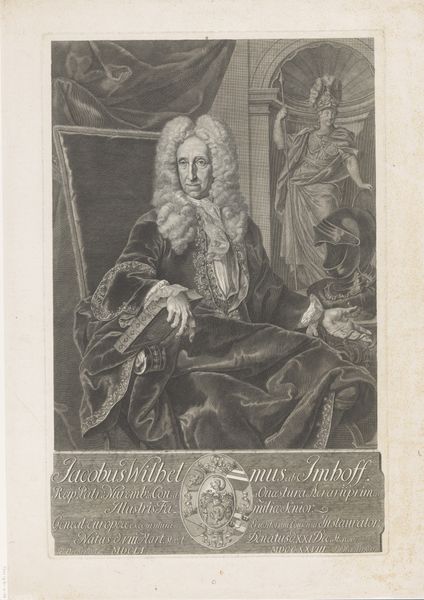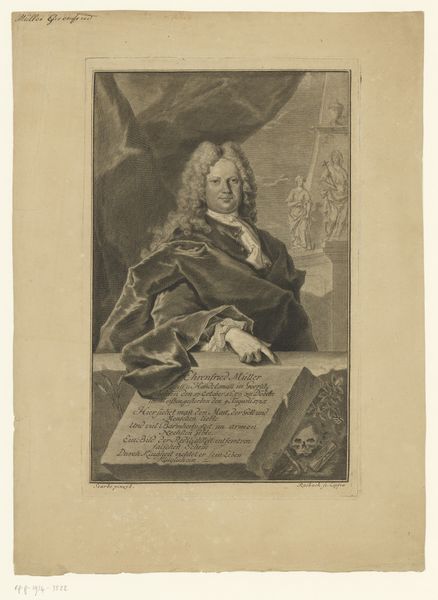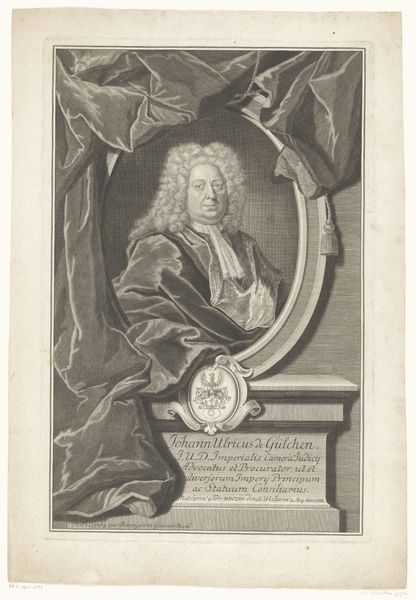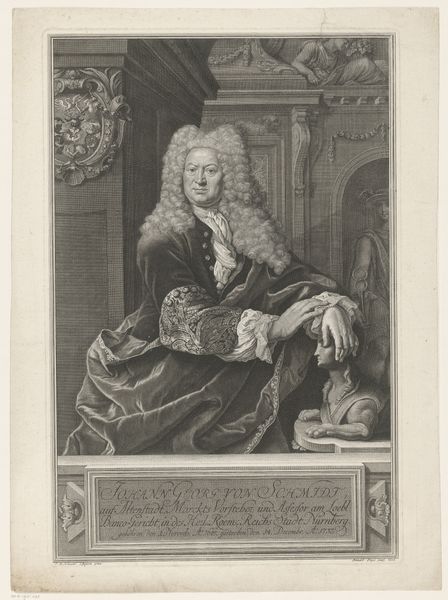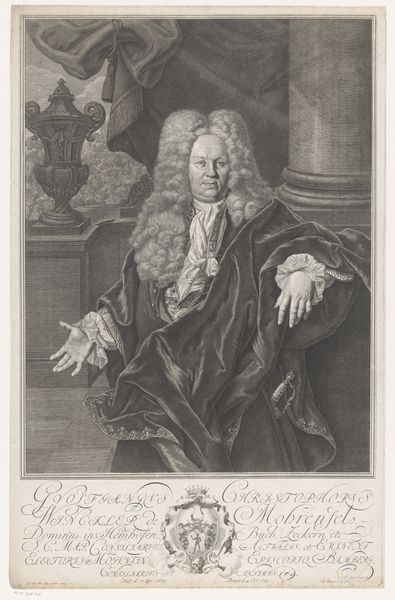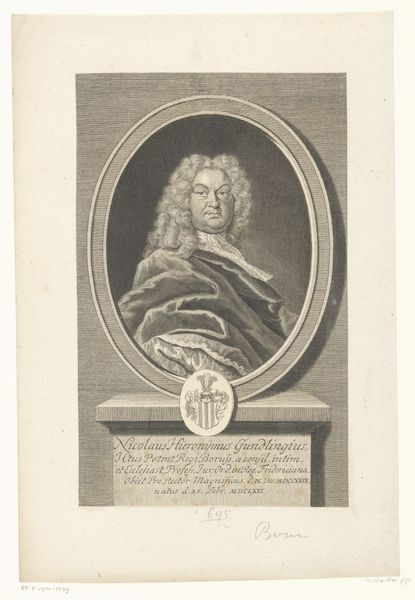
print, engraving
#
portrait
#
baroque
# print
#
old engraving style
#
portrait drawing
#
history-painting
#
engraving
Dimensions: height 325 mm, width 241 mm
Copyright: Rijks Museum: Open Domain
Curator: Right in front of us, we have a captivating engraving, "Portret van Johann Burkhard Freystein," dating back to sometime between 1675 and 1748, currently held in the Rijksmuseum collection. Editor: My first impression is of formality bordering on the theatrical! That wig alone commands attention; it’s a statement, a performance, not just hair. The gaze is strong, assured, yet there’s a slight melancholy. Curator: The artist, Moritz Bodenehr, employed engraving to create this portrait, a common printmaking technique of the baroque era. It involves meticulously cutting lines into a metal plate to hold ink. Looking closely, you can almost trace the process. Editor: It is truly intricate. Consider all that laborious work that went into realizing the textures, the fabric, the swirling baroque architectural details fading softly in the background...I sense the quiet dedication required; hours etching away at this copper plate. Curator: The decision to render Freystein using this medium emphasizes specific social contexts and consumption patterns. Prints facilitated the dissemination of portraits to a broader audience beyond the wealthy elite typically commissioning painted portraits, allowing for the reproduction and circulation of Freystein's image and influence. Editor: And I'd argue, in the details, we see the man beyond the role. The hand gesture, the fall of fabric...they reveal his world. Though rigidly posed, he’s also alive. Even his coat is about to fall of, adding the casual aspect into his formal clothing Curator: This work embodies an interesting tension. The baroque aesthetic emphasized ornate detail and grandeur. Engraving offered precision but also constraint; an artist can achieve textures but through deliberate, controlled mark-making. There's a very careful labor investment in it that has very little reward as compared to modern printing techniques. Editor: It does feel… almost quaint, given our modern obsession with instant gratification and digital reproduction. Looking closer, you feel the artist's touch, however mediated by the technique, which makes it more special in ways. It transcends mere representation, doesn’t it? It whispers of history, craft, and human touch. Curator: It offers a way into considering material practices that constitute image making. Thinking about how value and meaning were embedded into objects and who these portraits addressed brings to our present context interesting avenues. Editor: Absolutely, reflecting on this has prompted a sense of respect for traditional skill that I'll carry with me. I love being made to ponder what will carry value for others in the years to come.
Comments
No comments
Be the first to comment and join the conversation on the ultimate creative platform.
